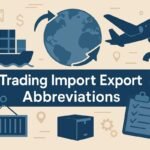Business Model Examples
50% of innovations go through a change of business model. So we should not be obsessed with technological innovation which is often much more complex, risky and expensive.
In this article, we invite you to think about your innovation differently. It’s been almost 5 years since we specialized in this field. I have accompanied more than 100 projects to think in terms of value creation from a business model paradigm shift.
To carry out this type of project, you need:
- Understand the logic of business models
- Work in workshop mode
- Prototype different models & leave room for chance,
- Test different alternatives to then select the best scenario.
Business model innovation involves finding new ways to create, capture and deliver value to customers.
To inspire you, here is a list of business models from the most basic to the most original, illustrated with examples of popular companies and some simplified canvases. It is often advisable to use several business models in order to secure your company’s activity as much as possible.
THE FREEMIUM MODEL
In the “freemium” model, one segment of customers benefits from a free offer while another segment pays for a premium service. The paying segment subsidizes the non-paying segment. This model is used by some companies like LinkedIn to offer free basic services to users and convince some to pay for more comprehensive services.
Examples: Skype, LinkedIn, Pandora, antivirus software, Skype, Spotify
Possible adaptation: Offer to try the service for free for a specific period
THE FREE MODEL
The free business model offers products or services for free. Its funding is based on advertising. Google, for example, uses algorithms to deliver targeted advertising based on user searches.
Examples: Free newspaper, Google, WordPress, Facebook
MULTI-SIDED PLATFORMS
Multisided models connect two different and interdependent groups. It is the interactions between these groups that create value. This type of platform must attract a lot of users to generate a network effect and become profitable.
Some companies use the multi-sided model to make the purchase simpler and more complete by offering complementary products or services (iTunes and iPod for example). Other companies like eBay use an auction-type model, also called “Business Model Auction” connecting buyers and sellers.
The profit made on the consoles sold generates a significant margin, unlike competitors who base their source of income mainly on royalties because they spend a lot on R&D for high-performance consoles.
Other examples: Google, eBay, Visa, iTunes, online video games
SHARING MODEL or ACCESS OVER OWNERSHIP
It’s about “sharing”, but with a commercial focus. This system allows you to pay for a product, service or offer for a period of time without actually owning it. It could be renting a car (eg Zipcar), renting an apartment (eg Airbnb) or even industrial machinery.
This is one of the most disruptive business models due to the impact on ownership and the revenue that can be generated. A car could suddenly be a source of income instead of just a cost.
AUCTIONS
CLASSIC
The best-known auction model is that of classic auctions: sellers set a minimum price for a product/service which will or will not increase depending on demand. In other words, based on competitive offers from different buyers.
Example: eBay
REVERSED
With the development of new technologies and the internet, new ways of selling online have emerged. There is in particular the reverse auction model: a buyer is interested in a product/service, then the platform calls on several sellers who will offer a price offer. Whoever offers the most advantageous offer for the customer at the end of the auction will win the sale. This business model is based primarily on subscriptions paid by providers. In general, the duration of auctions is quite short to encourage faster responsiveness from suppliers.
Example: Oopad, Priceline
LUXURY MODEL
Companies following this model target a wealthy and demanding clientele. To differentiate themselves from competitors, they pay particular attention to product quality, ancillary services and the customer experience. The cost of the activity is therefore very high, but is offset by the high purchase price of goods. Companies in the luxury sector are used to enjoying high margins.
Example: Dior, Chanel, Cartier, Hermès
THE BROKERAGE MODEL
The brokerage model is very similar to the multi-sided platform model. This is an intermediary company that is remunerated by deducting an amount from transactions carried out between different parties (or by subscription). This model therefore aims to bring two distinct communities into contact with the aim of creating value and generating income. This source of income can be secondary or primary. In the case of eBay, it is primary income. This business model is also used by shopping group sites or good deals like Groupon and also in the financial world such as for crowdfunding platforms.
Example: Brokers, real estate agency, MyMicroInvest, eBay, Groupon, Gagglon
Possible adaptations: Income based on a percentage established according to the value of the transaction
THE LONG TAIL
The long tail model aims to sell “more for less”. In other words: sell a large number of niche products rarely offered on the market, each in small quantities. It is all of these sales that make the model profitable. Conversely, in the traditional model, it is a small number of “best-selling” products that make up the majority of revenue. In general, companies based on the long tail model must maintain a low cost of storage while ensuring the visibility of their products via their web platforms.
Examples: eBay, YouTube, Netflix, Amazon, Facebook, Lego Factory
THE LOW-COST MODEL
Companies that are based on a low-cost revenue model stand out by offering a lighter offer of products or services that are cheaper than the competition while maintaining significant margins. How ? By inviting the consumer to carry out some of the tasks themselves. For example, by letting him serve himself on the shelves, pack his own products, assemble his own furniture, etc. This model is interesting from the moment the savings made exceed the price reductions applied.
Examples: Ryanair, Easy-jet, Cdiscount, Ikea, Southwest Airlines, Air Canada rouge
THE MODEL OF ORGANIZED RARITY
In order to justify high unit prices, a company can voluntarily cause the scarcity of its products. It is therefore a question of giving rise to a very powerful effect of desire in the consumer linked to the privilege he would have of owning a product.
- Example: The Lamborghini Veneno Roadster, reputed to be one of the most expensive cars in the world, is produced voluntarily only in a few copies. However, organized scarcity does not always concern the luxury sector:
- Example: In the distribution sector, a company may choose to sell its goods using an exclusive distributor.
- Example: A company that monopolizes natural resources by filing a patent
LEVERAGE NEW INFLUENCERS
Identify new influencers who make the offer more attractive and accessible to a wide audience. It is in fact an innovation in one of the blocks of the business model canvas: the channels. A very good example is that of Kiko, who decided to launch a targeted loyalty strategy from the outset through influence marketing. The company has set up a platform connecting brands and web influencers. For this, the brand therefore had to identify, hire and manage bloggers, youtubers, opinion leaders or even experts with a real interest in the beauty sector, make-up, etc. who will become brand ambassadors during the campaigns.
Other examples: Hindustan, Unilever
THE MEDIA BRAND MODEL
This model aims to offer quality content for free in order to attract visitors and encourage them to discover a commercial offer associated with this content at the same time. Visitors will then have the choice either to simply consult the information available or to go to e-commerce to discover the offer.
Examples: An information site on gardening techniques offering at the same time to discover gardening tools on their e-commerce site. You can also find this model in museums that offer souvenir shops at the end of the visit.
THE “ PRINTER ” MODEL OR DIRECT CROSS SUBSIDIES
The printer model, also called the direct cross-subsidy model, is based on a very simple principle: to ensure that the purchase of a first product leads the consumer to buy a second on which the company will have a much higher. This model is therefore in fact based on a strategy aimed at selling on the one hand a loss leader at a very low price (and therefore with a low margin) and on the other hand a complementary product to the first with a much higher price. high (with a much larger margin) in order to gain a monopoly on this market.
Example: Gilette which sells razors but makes a profit mainly by selling blades with a much higher margin, printers and cartridges, Nespresso and its capsules, Apple paid applications, etc.
Possible adaptations: Offer a subscription instead of the linked product (for example Virgin mobile or Vodaphone which offer iPhones from US 1 subject to subscription)
THE BRICKS AND CLICKS MODEL
This model aims to integrate the Internet model into consumer behavior in order to promote both an online (clicks) and offline (bricks) presence in the discovery, ordering and payment of products or services. It is therefore a question of combining online sales and traditional in-store distribution.
Examples: M&M’s (online sales site for personalized M&M’s), FNAC, SNCF, Home Depot, Tesco, REI
This is also the strategy of showcase sites, i.e. sites that allow Internet users to consult the products and their characteristics but which do not allow them to buy from a distance, thus encouraging them to visit the store.
Read also: Success of Your Business Depending on Finance, Sales Marketing and Operations
THE CREATION OF COMMUNITIES OF USERS
In an increasingly digital world where consumers broadcast and share content instantly, companies are concerned with the creation of user communities around their products or services. The principle of these business models is to allow members to access quality information on products and services. Businesses generate revenue through membership fees and advertisements. Trackmania, for example, has gone from a PC car racing video game to a multiplayer video game.
Another example: Listminute, Angie’s List
ECONOMY OF FEATURES
This model targets customers who are less demanding in selling products that are not especially superior to others, but more suitable and easier to use in order to create value and control costs in a world of limited resources. The sale of the property is replaced by the sale of the use of the property. This model therefore encourages innovation by allowing prices to be lowered and margins to be increased. It’s Villa! that rents bicycles instead of selling them, it is Michelin that charges truckers for the kilometers traveled with their tires rather than selling them, it is the car wash stations that charge for the use of the facilities, etc.
Other examples: Michelin, Xerox, Peugeot
DISINTERMEDIATION
As its name suggests, the disintermediation model aims to eliminate as many intermediaries as possible throughout the activity’s value chain in order to deliver a standard product or service as directly as possible to customers. The growth of these business models can be explained in particular by the Internet, which has been able to bring sellers closer to buyers and increase their visibility while reducing their costs. Today artists can create their own songs and promote them without going through a record company, airlines can sell their tickets online without going through travel agencies, and owners can be in direct contact with tenants… All thanks to the internet! The nature of intermediaries has simply changed, today a large majority of intermediaries are in fact websites (travel agencies have adapted their strategy to this change and are now almost all online).
Another example: Dell
DIRECT SALE
Direct sale refers to all sales made directly from the seller to the buyer outside the usual commercial premises. It is therefore a form of disintermediation taken to the extreme: there are no intermediaries. This form of sale is found when a farmer sells his products on the farm or during door-to-door sales which are generally accompanied by a product demonstration or tasting. The advantage of this model can be the reappropriation of margins or better control of its image, after-sales service, and better knowledge of the customer through direct contact with it. Door-to-door selling (like Tupperware get-togethers or door-to-door cooking equipment sales) is a good example of direct selling.
Other examples: Amway, Avo, Nuskin
THE VAR (Value-added Reseller) MODEL
This model is based on the resale of a product or service by a company by making modifications that will add value to the original product or service.
This practice is common in the electronics industry and in information technology , where there are frequent cases of software adaptations , possibly to be supplied combined with a particular hardware ( bundled solution ).
Businesses of this type therefore provide added value, through integration, support, training, services, maintenance and more. The term is widespread to name the majority of distributors ‘ customers, ie those who act as an intermediary with the end user of the integrated solution.
Example: Computer hardware retailers
REINTERMEDIATION
Contrary to disintermediation, one can seek to reintroduce intermediaries throughout the circuit (from production to distribution). Independent artists could see an interest in selling their works on the net via an online platform for example.
Another example: private sale sites like Showroomprive
THE UNGROUPING MODEL
This concept is based on the fact that there would only be three economic models: customer relations, product innovation or infrastructure. In other more marketing terms: either the company will look for customers that its offer could interest, or it will imagine an offer that could interest a segment of dissatisfied customers, or it will place itself as an intermediary between buyers and sellers. Of course, these three models can coexist, but ideally they are unbundled in order to avoid any conflicts and increase the efficiency of the company. A company will be all the more efficient if it chooses to focus on one of these three value propositions.
Examples: private banking (customer relationship vs back-office), telephony (customer relationship and network maintenance)
THE “LOW-TOUCH” MODEL
Offers standardized versions of traditionally personalized and more expensive products or services. The interaction between staff and customers is greatly reduced.
Example: Xiameter, Mailchimp, SurveyMonkey
THE “PAY WHAT YOU WANT” MODEL
This model is not based on established prices but on the perceived value of the product or service by the customer. The company offers customers to pay the price they consider to be the right one according to its perception of the quality/price ratio. This model is often used as a promotional tactic but can also be used as a business in its own right for both for-profit and non-profit businesses. This new way of running your business is meeting with real success abroad and is starting to have a snowball effect in Belgium. Contrary to what one might think, very few customers take advantage of this system to pay small amounts. Indeed, very often the amount paid is close to (or even exceeds) the base amount.
Example: Restaurants where the customer decides what he wants to pay for his meal (The “Le comme back” tavern in Evere), Radiohead who offers to sell his album online at the price everyone wants to pay
OWN THE UNWANTED
This model seeks to reach segments that are not directly attractive in the market. The concept focus on a niche of people who are not considered profitable for other businesses.
Example: AllLife, Grameen Bank
THE OPEN ECONOMIC MODEL or CROWDSOURCING
Relying on collaboration with external partners in order to create value is also a form of business model used by some companies. This relationship can be formed in different ways:
“outside-inside”: the company uses external ideas (Procter&Gamble: open innovation process, the company uses internal research via external partners);
“inside-out”: the company brings unused ideas or assets to external partners (GlaxoSmithKline: patent pool)
Other examples: IBM, Open-innovation or Innocentive, which uses a platform that connects competent researchers and companies wishing to solve R&D problems.
THE MARKET MAKER MODEL OR MARKET MAKER
This model is a variant of the brokerage model that is mainly used in financial markets. The market maker or market maker will be the market. It is generally a broker/dealer who is the counterparty of the offer instead of posing as a simple intermediary. It is responsible for ensuring the sale of certain so-called illiquid financial instruments. The market maker therefore intervenes to regularly propose buying and selling prices in order to ensure the rapid sale of the securities.
THE SUBSCRIPTION MODEL
Customers pay the subscription price to have access to the service or product for a specified period.
Examples: Netflix, Magazines, BabyPlays, STIB
THE ONE-SHOT MODEL
This is the simplest model: the customer makes a single payment from which he can benefit from a service, a durable or non-durable good that will belong to him definitively.
Examples: sale of tools, foodstuffs
Possible adaptations: Spread payment, payment deadline, cross-selling (bottles of vinaigrette next to salads, gardening books next to tools, etc.), the sale of complementary products such as the shoe polish tube sold with the pair of shoes.
THE RENTAL OR LICENSE MODEL
The customer pays a fixed amount to dispose of a good during a determined period.
Examples: Rental of material goods: car, real estate (possibility of adapting payment such as purchase options, decreasing payments, etc.), rental of intangible goods such as the rental of specific skills, Xerox
THE INSURANCE MODEL
In this model, the customer (insured) will pay in advance a sum (punctually or by subscription) defined during a given period on the basis of the probabilities/statistics that an event occurs. The client will be reimbursed in whole or in part and the insurer will be compensated on the basis of the difference between the two amounts: the estimated one and the actual amount to be reimbursed when the event occurs.
Examples: Repatriation, home, car insurance
THE CASINO MODEL
Also based on statistics and probabilities, the casino model is based on the high probability that players will always lose in the long term. Indeed, the games offered will always have a small specific detail that will give the advantage (even minimal) to the casinos and that will constitute their long-term revenue model. Their value proposition? integrate games into the sale of their products and sell dreams. It’s up to you to see how you could adapt this model to your business. Why not adapt your pricing by offering the customer to pay only when he wins?
Another example: The national lottery
THE PRODUCTION AND DISTRIBUTION MODEL
The production model consists of buying raw materials (or already partly modified) and transforming them into products ready to be sold.
Example: agricultural, artisanal or industrial trades.
This model can also be adapted by creating bespoke products, on demand, etc.
The distribution model, on the other hand, simply aims to buy products and resell them at a higher price. The company deducts its miscellaneous costs from the amount it receives. In general, it is a model that is often crossed with another.
Example: Trades of wholesalers, retailers, mass distribution, etc.
FRANCHISE
It is a contractual agreement between an entrepreneur (the franchisee) and the franchisor, that is to say the owner of a brand and a successful business model. The franchisor will provide support and management advice to reproduce its operating system elsewhere and the franchisee will receive a percentage of the turnover achieved.
Examples: Deli caterer, Subway, McDonald’s, KFC, Starbucks
THE FEES IN, FREE OUT MODEL
The principle is to require payment from the first customer for a service that will then be distributed free of charge to subsequent customers. This model is often used in businesses that require a one-time development cost for a product or service and an almost non-existent cost for its distribution.
Example: digitization services
THE DOUBLE-SIDED MODEL
The principle of this model is simple: offer the opportunity to a customer to benefit from the content of an offer for free on the condition that a third party takes charge of all the financing.
Examples: Advertising in the press where user customers access information for free and financing customers take advantage of a space to transmit their advertisements (Metro, TF1, Google, Facebook). The sources of income for this model can obviously vary with the payment of a subscription for user customers and the payment of financing customers to be included.
INNOVATIVE PAYMENT MODELS
Currently, this model is still widely used. The companies that use it rely on unconventional means of payment.
Examples: Bitcoin, the settlement of transactions by virtual currency in Linden Dollars created by “ Second Life ”
This list will be regularly updated, so don’t hesitate to come back and take a look at it from time to time! As you may have noticed, there are a multitude of different business models, some complement each other, others are completely different. But one thing is certain… You are spoiled for choice when it comes to finding the business model(s) that suit you or simply finding inspiration there.
Like it, Share it. Thanks
Photo credit: Tumisu via Pixabay
Ready to get started?
Are you a consultant? If you are a consultant and wish to contact us for any reason, we invite you to click the ‘Let’s Get in Touch’ button to connect with our team and receive the necessary assistance.
Are you in need of appropriate and objective advice? Feel free to click the ‘Request for Proposal’ button to contact us and discover how we can assist you today.







